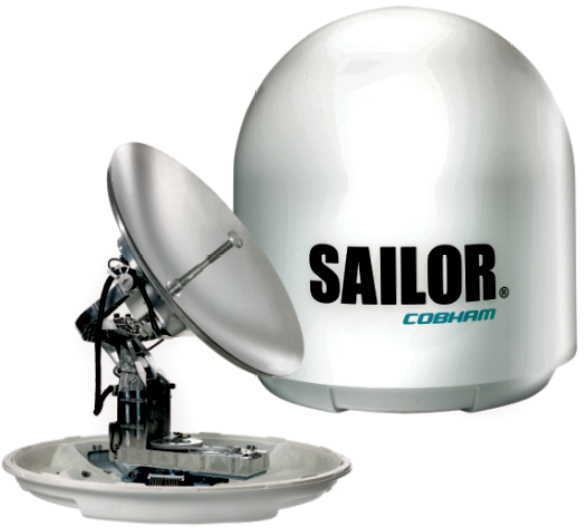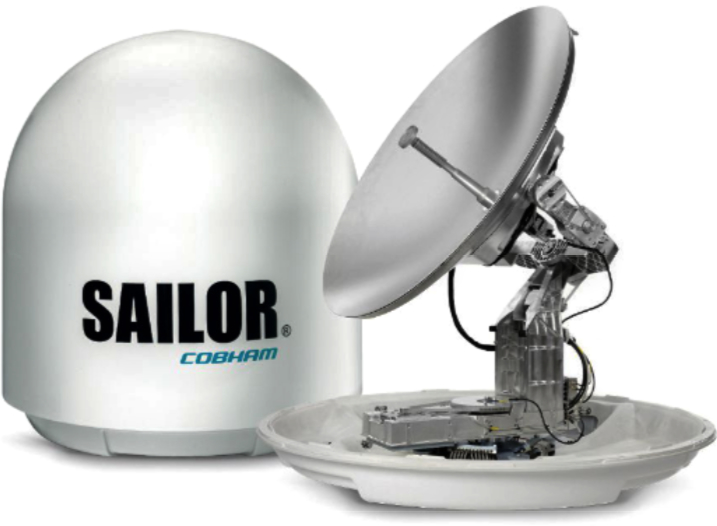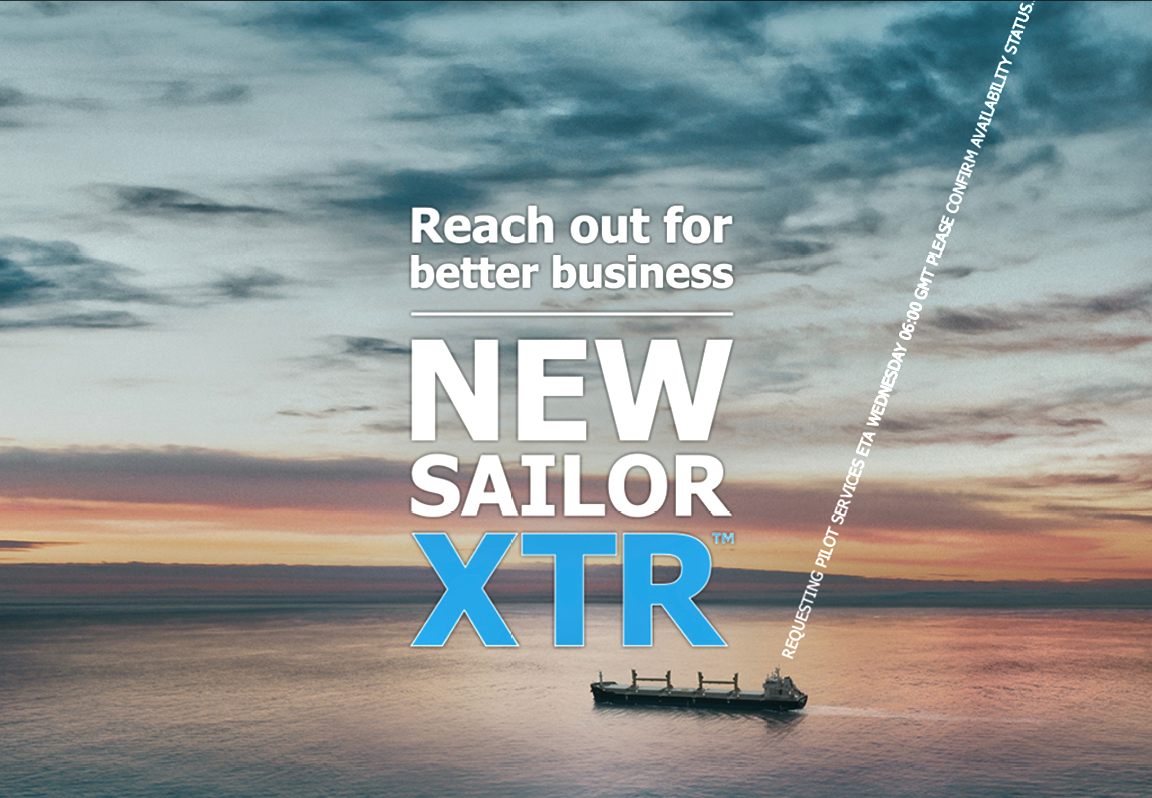From digital transformation to future satellite constellations, Jens Ewerling (photo to the left), Product Manager, VSAT, Cobham SATCOM, provides his unique insights on the development of the company’s latest antenna platform – the SAILOR XTR. Mr. Ewerling, what does new generation mean to you in the context of the SAILOR XTR antenna platform?

Jens Ewerling
For Cobham SATCOM, a next generation technology platform is one which sets a new standard, a standard that’s achieved through best-in class accreditation and market-leading technical capabilities. In the maritime market, SAILOR XTR epitomizes this. After two and a half years as well as multiple, parallel, development tracks, we’ve added new electronics and ground-breaking software to this unit One highlight is the new XTR Antenna System Control Module, a powerful computer mounted inside the antenna that runs secure software and is connected to all of the other modules via an internal network.
How will the SAILOR XTR antenna platform enable users to access new constellations once they come online?
Jens Ewerling
The satellite industry is evolving at an unprecedented pace. Connectivity solutions that harness existing constellations, and are future-proofed for new constellations, are therefore paramount for those requiring connectivity in the maritime and offshore industries. We designed SAILOR XTR with the needs of our users and future constellations in mind. For example, the technology integrates the best of the SAILOR VSAT technology into a new platform with cutting-edge software and electronic capabilities that prepare it for future constellations in LEO, MEO, GEO and HEO satellite orbits.
Additionally, the one-meter SAILOR 1000 XTR sports a new simplified and robust pedestal for better antenna performance and easier and simpler conversion between Ku- and Ka-bands. The dual antenna operation provides fast and reliable automatic switching between two antennas and inbuilt flexibility, meaning that it is ready for future satellite networks.

Cobham SATCOM SAILOR XTR
How is the SAILOR XTR antenna platform enabling greater digital transformation in the maritime industry?
Jens Ewerling
The SAILOR XTR antenna platform will be key in supporting owners and operators, and, subsequently, the wider industry, in achieving digital transformation. For example, intelligence gathered by VSAT-powered data streams within the technology enable owners and operators seeking cost effective solutions to address and analyze a myriad of complex issues. These include growing calls for transparency, measuring, reporting in real time, and reducing fuel consumption and emissions, as well as improving seafarer welfare.
The SAILOR XTR antenna systems are also prepared for the Internet of Things (IoT) and has been developed to ensure up-time, boost the efficiency of on- board IT systems and improve vessel performance. The antenna’s built-in, IoT data protocols, such as Message Queuing Telemetry Transport (MQTT), Simple Network Management Protocol (SNMP) and RESTful API, make the SAILOR XTR antenna system a self-reporting item in a typical satcom/IT solution, providing up-to-date detailed antenna information and enabling preventive maintenance.
In that sense, the SAILOR XTR can be viewed as an enabler technology — a gateway to unlock greater all-round digitalization in the maritime and offshore industries.
Likewise, the technology’s new XTR Antenna System Control Module (ASCM), with a hardware encryption key chip mounted inside of the antenna makes data exchange faster, safer and more reliable for owners and operators. The ASCM is close to all other modules and motors via a star network topology for speed of data exchange and reliability. Importantly, it only accepts Cobham-signed software, which makes it impossible for cyber-attackers to read out the private key, which is programmed into the key chip. With digital transformation requiring more stringent levels of cyber security, we have developed SAILOR XTR to ensure the highest levels of security for our users.
Cobham SATCOM’s communication systems are known for delivering reliable and rapid connectivity in the world’s most challenging and remote environments. How is the SAILOR XTR building on this legacy?
Jens Ewerling
Everything we do at Cobham SATCOM is driven by our promise to deliver reliable connectivity, anywhere, at any time. SAILOR XTR continues to deliver on this promise, and is currently the world’s most rugged, reliable antenna designed to meet the demands of both current and future technology. For instance, an Ethernet port inside of every above-deck SAILOR XTR unit facilitates new connectivity options. The Ethernet port could also be used by solution Partners to integrate third-party devices, e.g., cellular transceivers, Wi-Fi access nodes, and so on. The additional data from these devices gets securely routed to an Ethernet port on the SAILOR XTR Below Deck Unit at a rapid 1 Gbps speed, once again, improving opportunity for data amalgamation and subsequent operational efficiencies.
With our users working in some of the world’s toughest environments, continuously seeking to improve the speed, quality and reliability of connectivity, will be key to raising the bar for safety at sea. Plus, we want to continue being the ones setting the standards.
Are there particular maritime industries, which can most benefit from the new generation of connectivity? If so, how?
Jens Ewerling
SAILOR XTR has been designed to provide constant satellite connectivity, whatever the location or circumstance. From merchant shipping to the fishing and offshore industries, the smart antenna is built to increase operational efficiency, drive up safety standards and unlock digital transformation across all sectors. Specifically, SAILOR XTR provides the high-speed connectivity, reliability and security that’s required in merchant shipping to conduct important business and obtain operational data, like sending manifests, sharing documentation to berth and the safe and secure delivery of pilots.

Cobham SATCOM SAILOR 1000 XTR with Ku-_antenna
+ radome
In addition, the antenna supports crew with mission-critical tasks, like efficiently documenting or trading catch on fishing vessels, while also providing those on- board with much needed contact with loved ones. The rugged, powerful and durable antenna also maintains high performance regardless of weather conditions, which is necessary for the extreme conditions often faced by those working at sea. Similarly, in the offshore industry, SAILOR XTR also enables crew to stay connected to the same network so that they can provide accurate status reports, such as a precise ETA, even in the roughest sea conditions.
What sets the SAILOR XTR apart from competitors?
Jens Ewerling
SAILOR XTR is the highest- performing, most reliable and cost-effective antenna system on the market to date. Built in response to changing market demands, evolving satellite networks and unprecedented uncertainty, we have designed the platform to drive greater simplicity for our users without compromising performance.
By investing in a futureproof system, we are providing owners and operators with more time to focus on business-critical issues. A necessity in an increasingly competitive market. With more than 15,000 SAILOR antennas in the field on all vessel types in all oceans, we have applied our technical expertise and years of R&D to develop a new marine technology that meet’s today’s demands and is future-proofed against tomorrows.
Could you provide us with some insight on the research and development process? When will we see the full product roll out?

Jens Ewerling
After a two-and-a-half-year development process and a recent launch, we’re continuing to roll out the full product portfolio. We are proud to have successfully installed the first SAILOR 1000 XTR Ku on the M/V Pearl Seaways operating in Scandinavian waters.
While the vessel is at sea, an off-the-shelf, LTE cellular device mounted inside the antenna is providing Cobham SATCOM engineers with remote access from the office and real-time antenna data to monitor performance. We will use all data gathered and user feedback to iterate our future product design.
Following the development of new electronics and mechanics for the 1 meter antenna, we are also now creating new antenna variants within the usual 1 meter, 80 and 60 cm aperture size brackets.
What is next in the pipeline for Cobham SATCOM?
Jens Ewerling
While generic Ku-band antennas and Ka-band antennas/user terminals for the Inmarsat Global Xpress™ are the dominating business, we are carefully evaluating potential business opportunities with new satellite constellations in non-geosynchronous orbits (NGSO), such as LEO and MEO.
New LEO and MEO constellations could disrupt the more traditional satellite business, which requires us to have a hardware play for that eventuality. We are leading the pack in this respect. The SAILOR XTR is the first of many to not only meet these demands, but also pave the way for the future of satellite communications.
www.cobhamsatcom.com/


